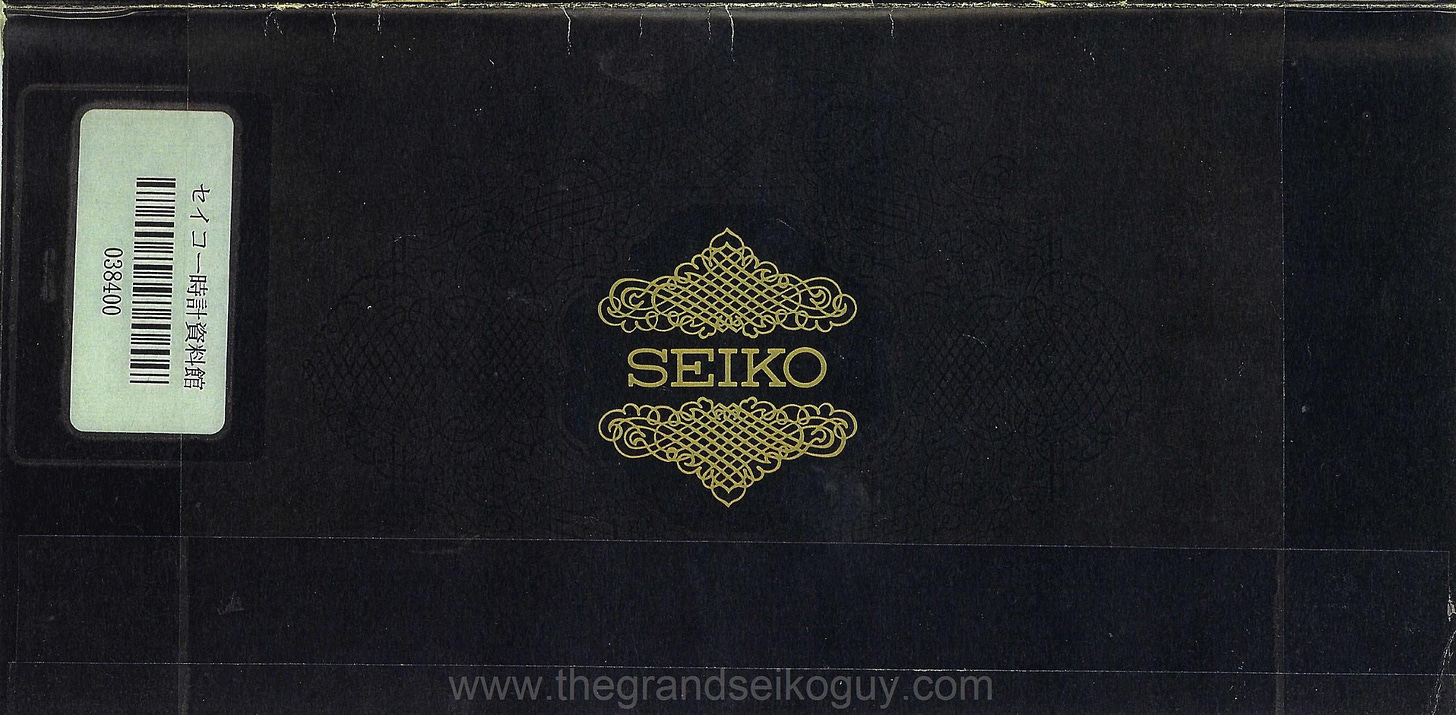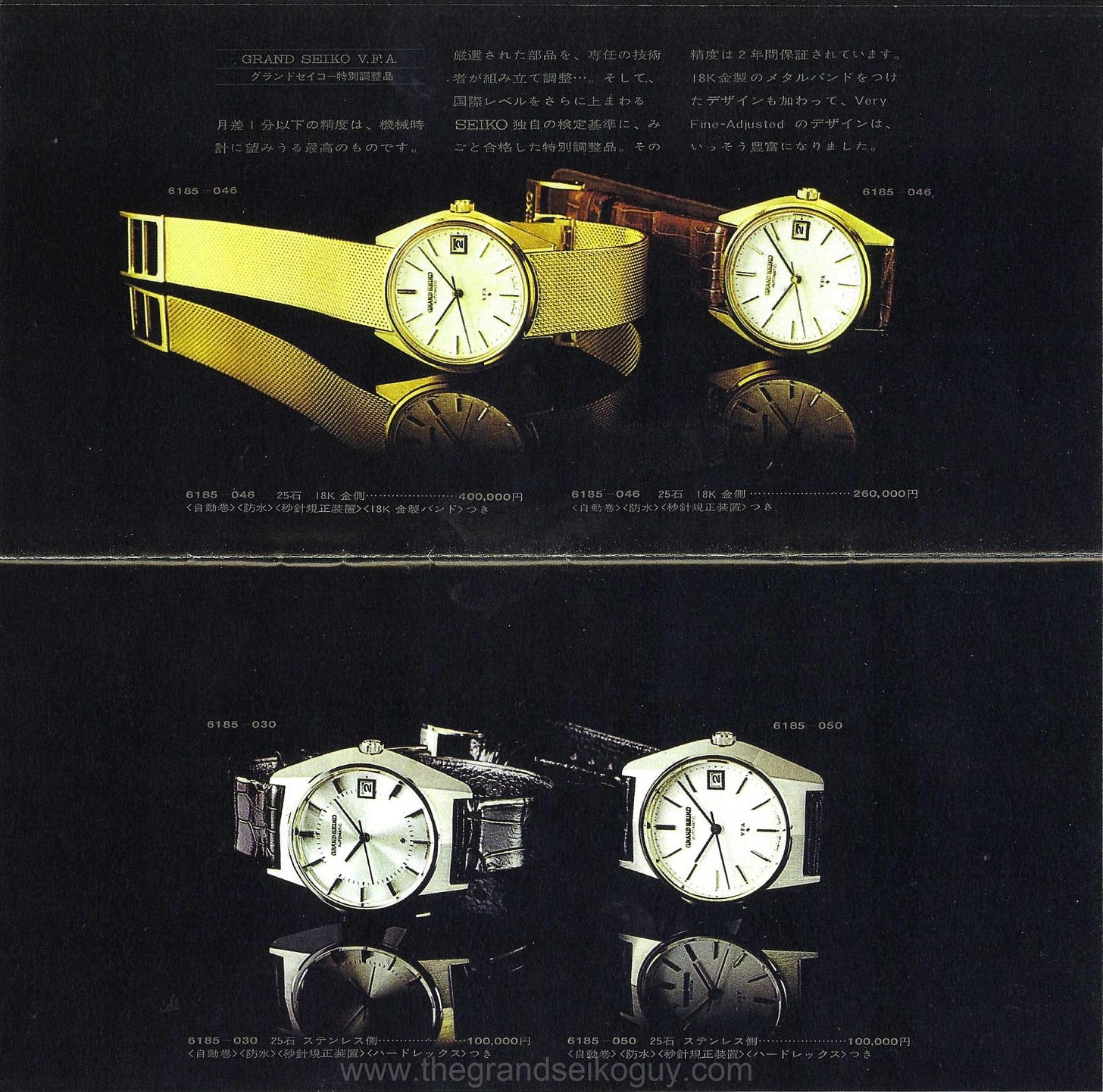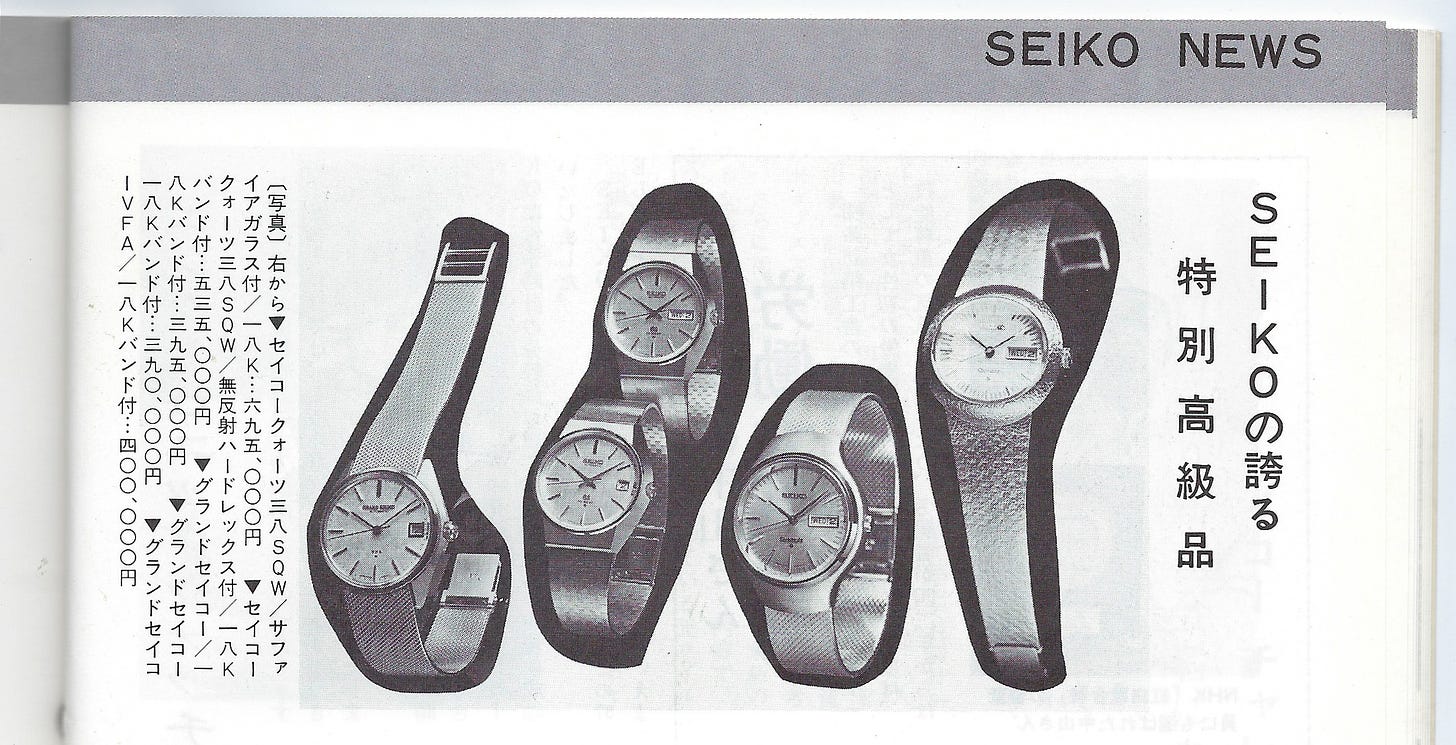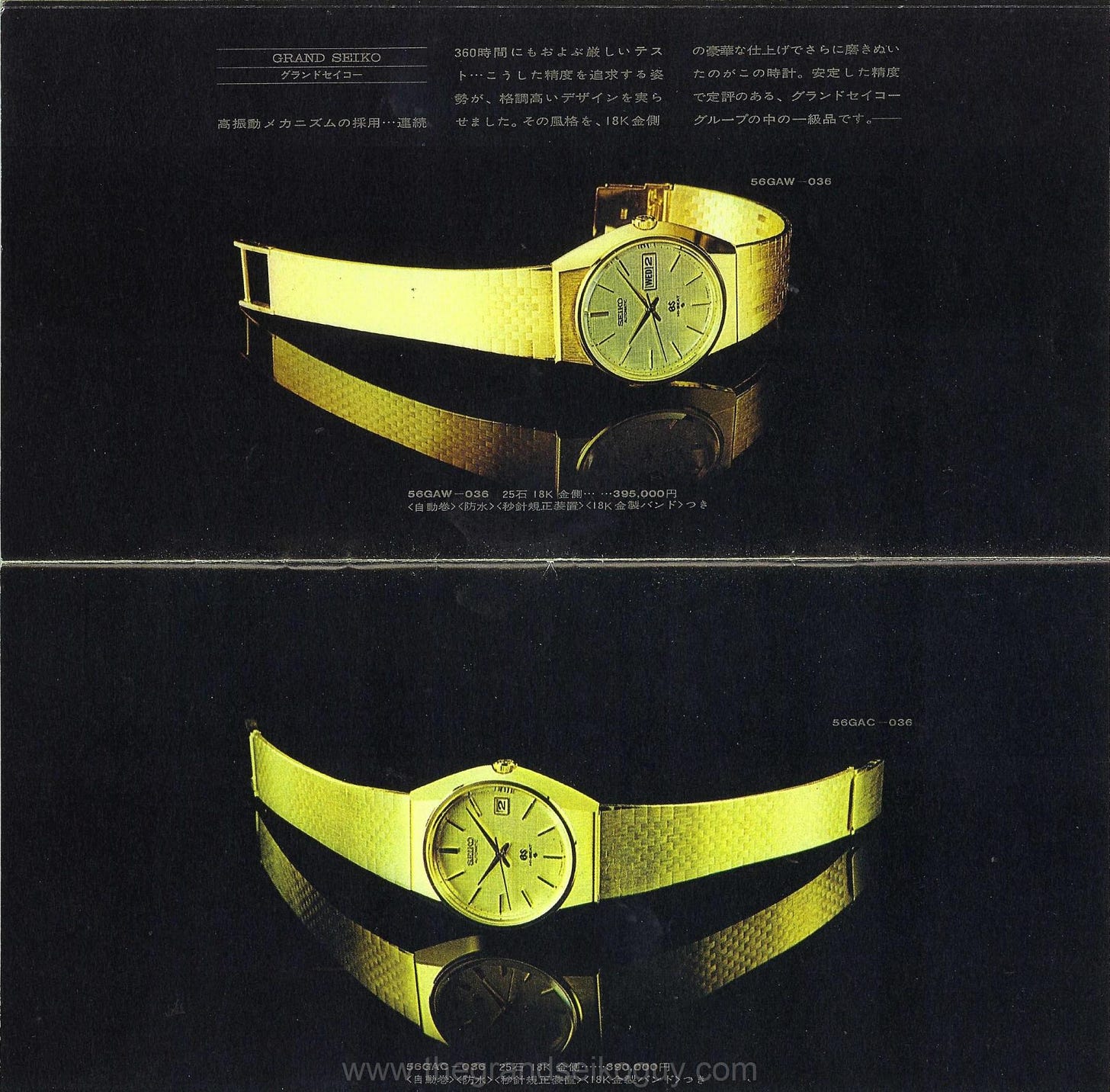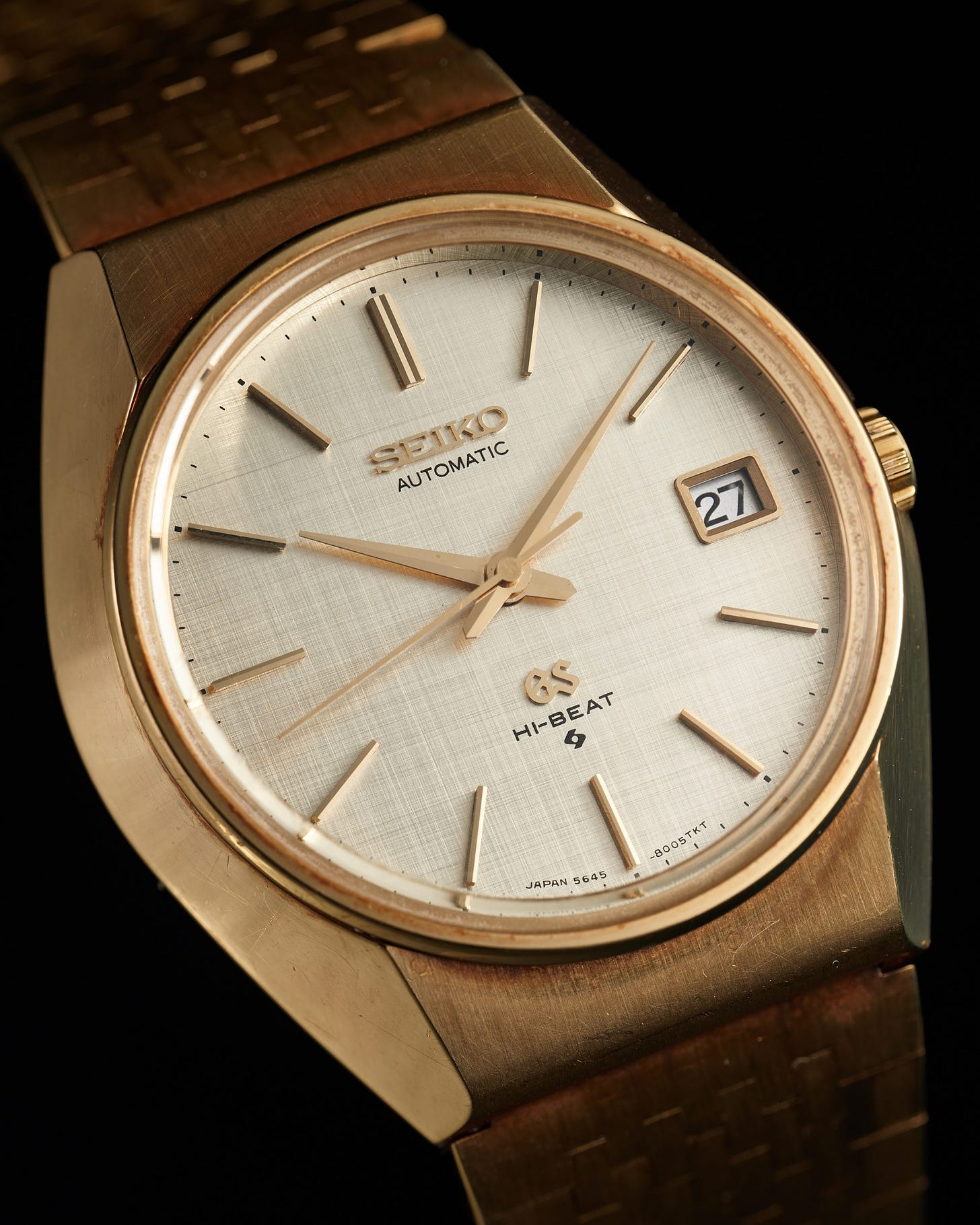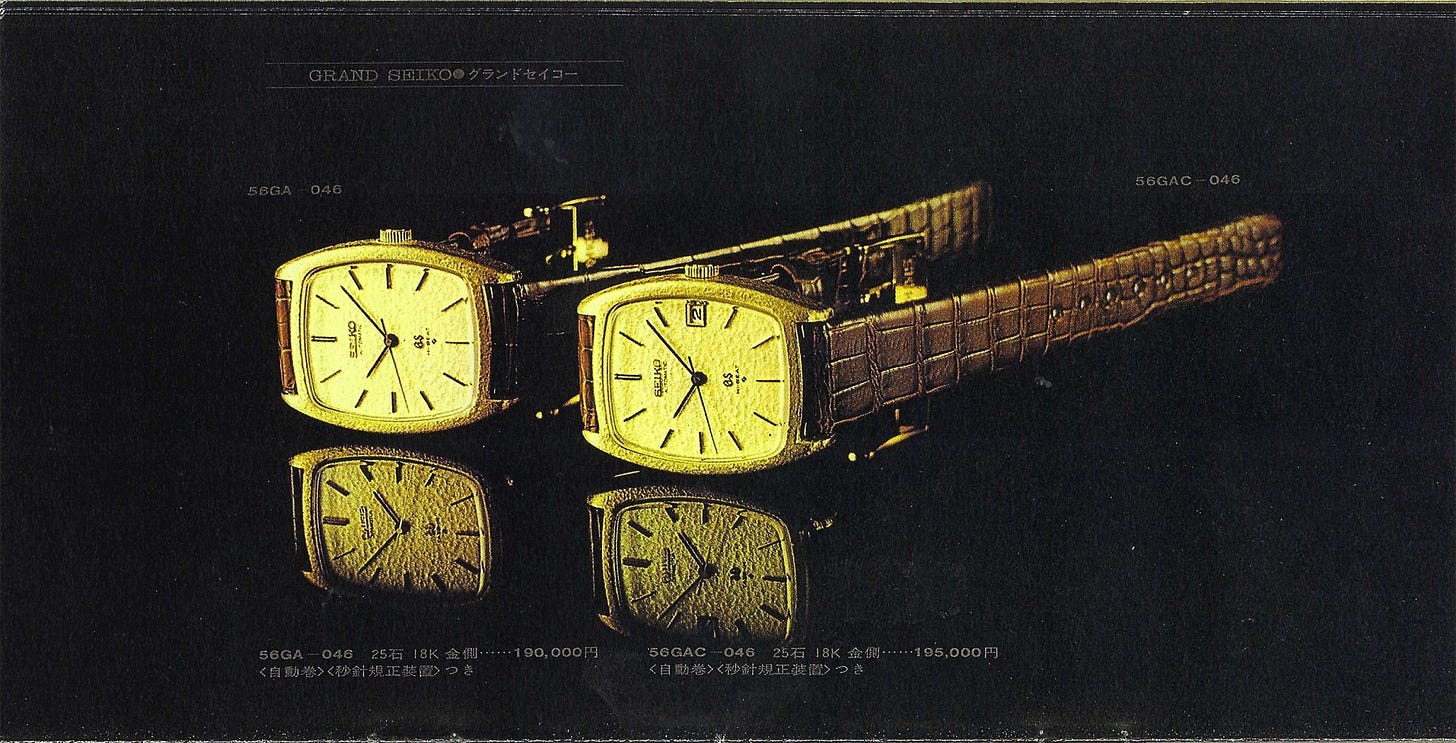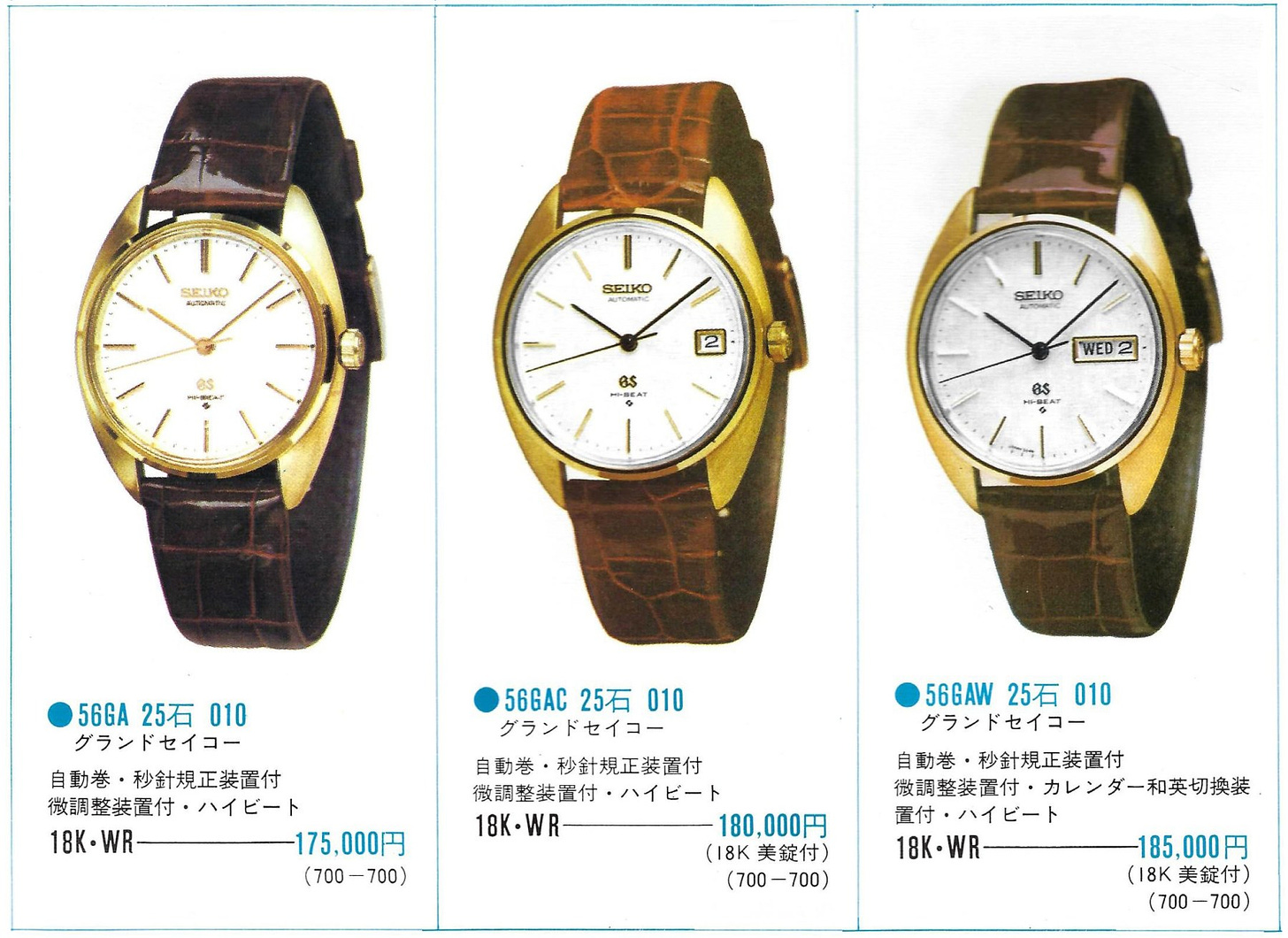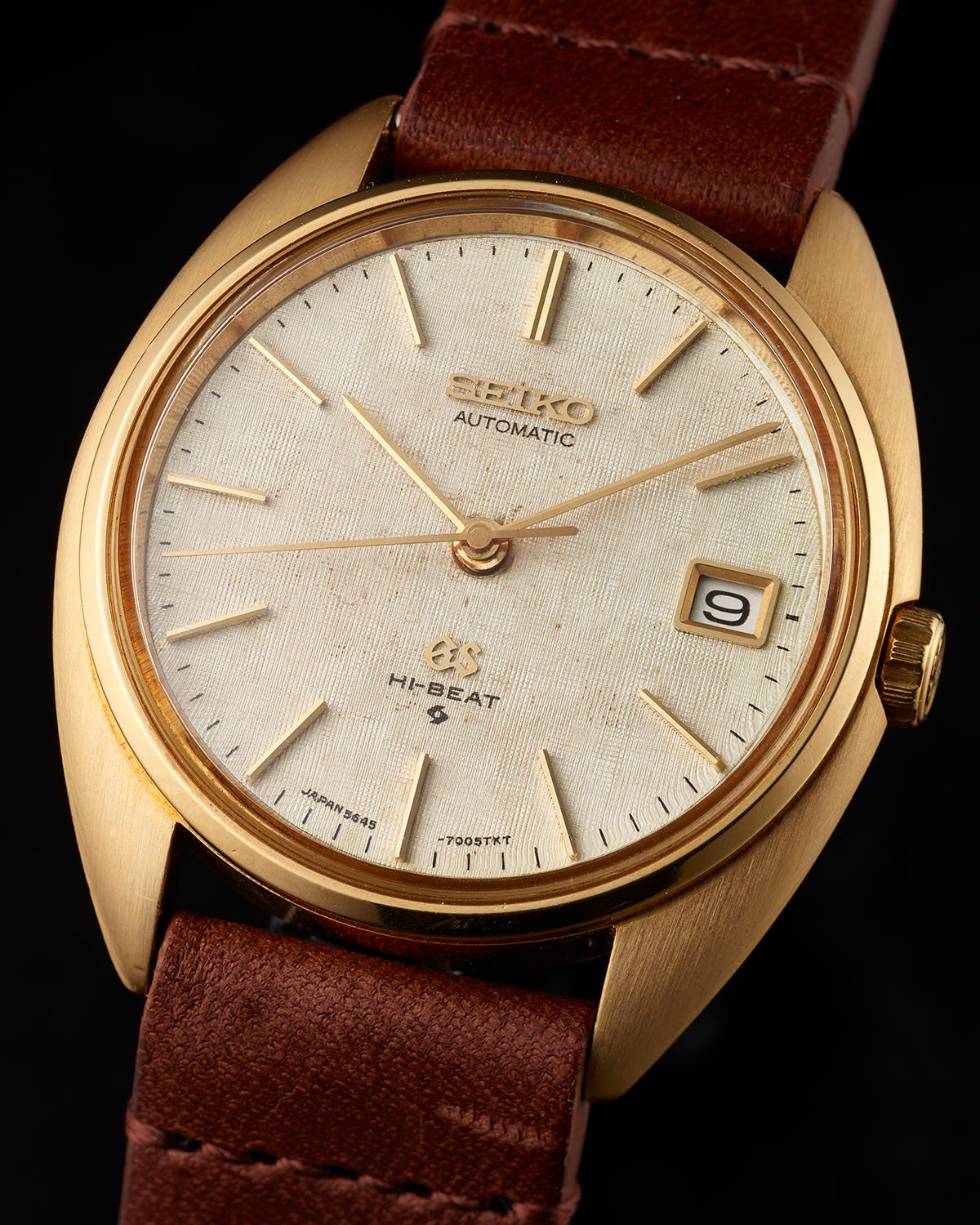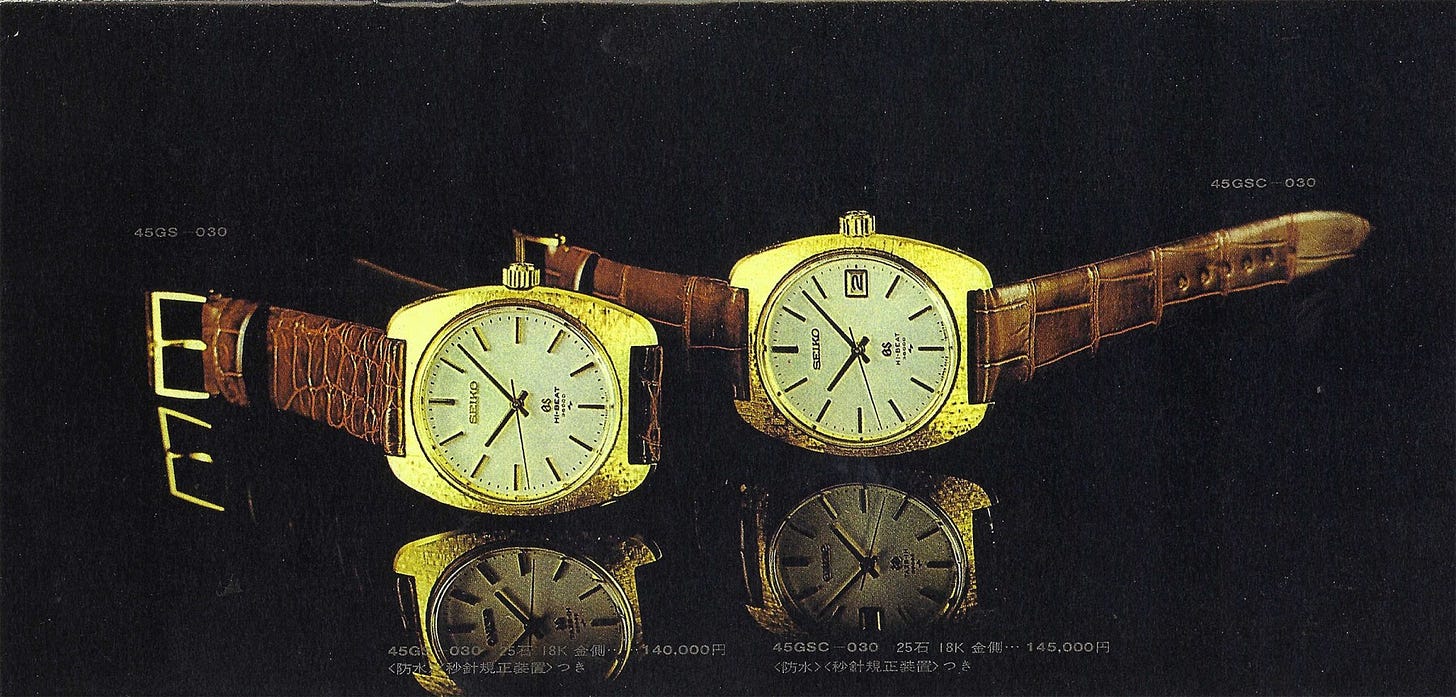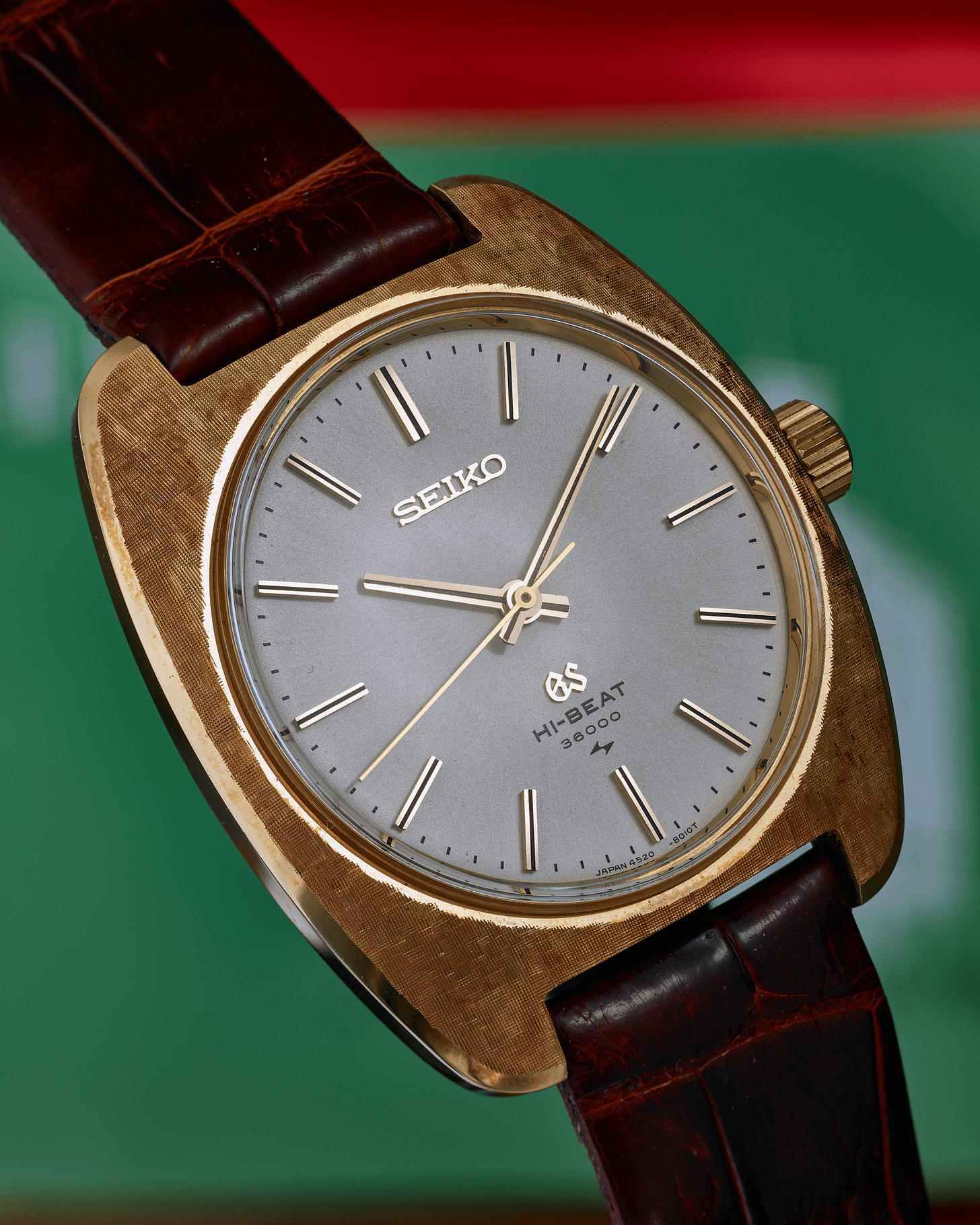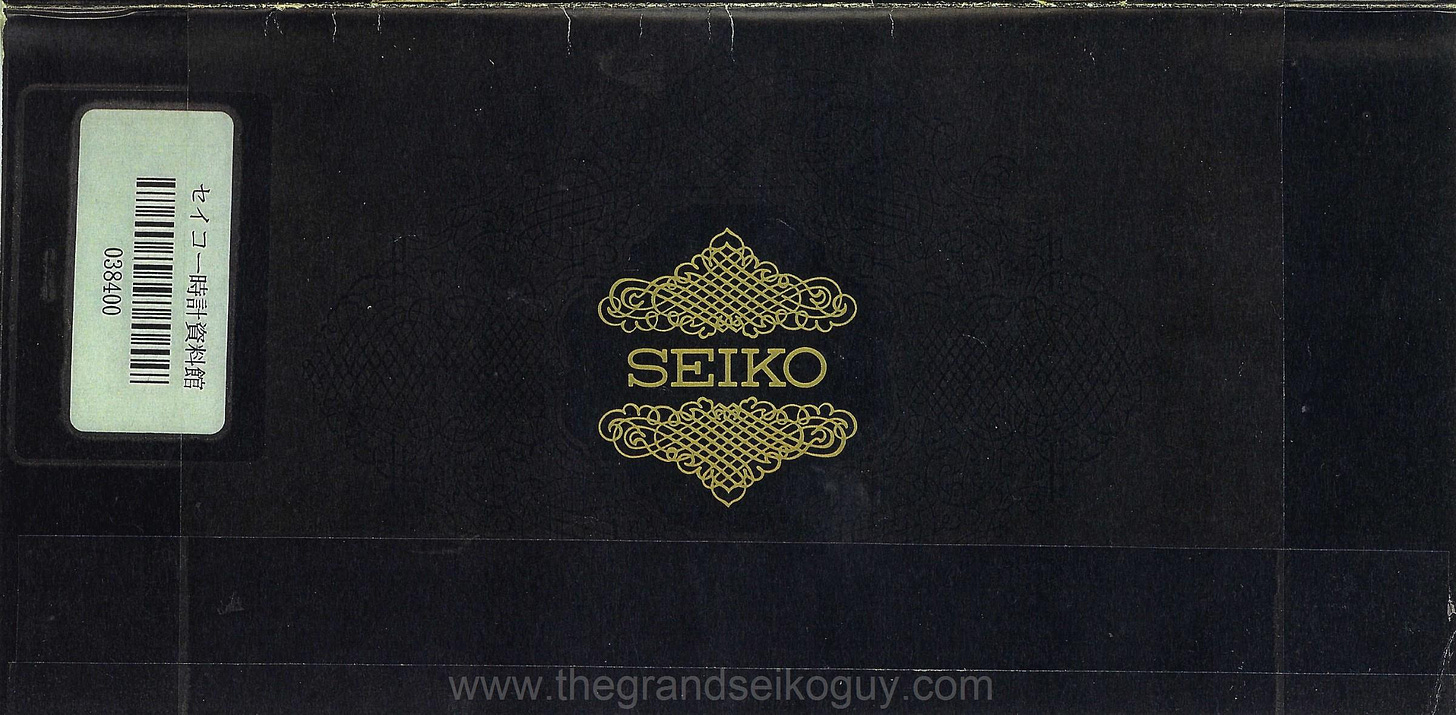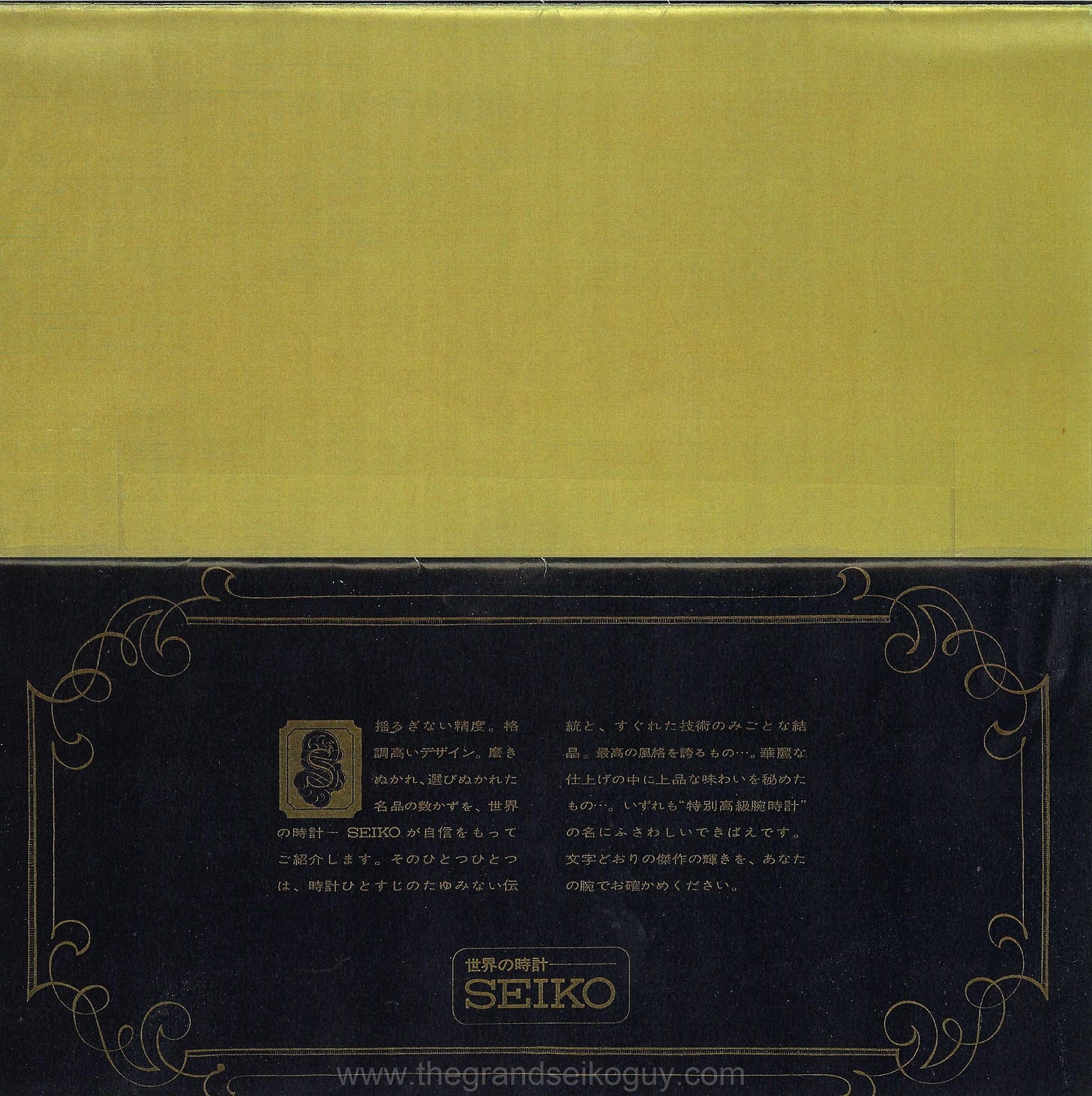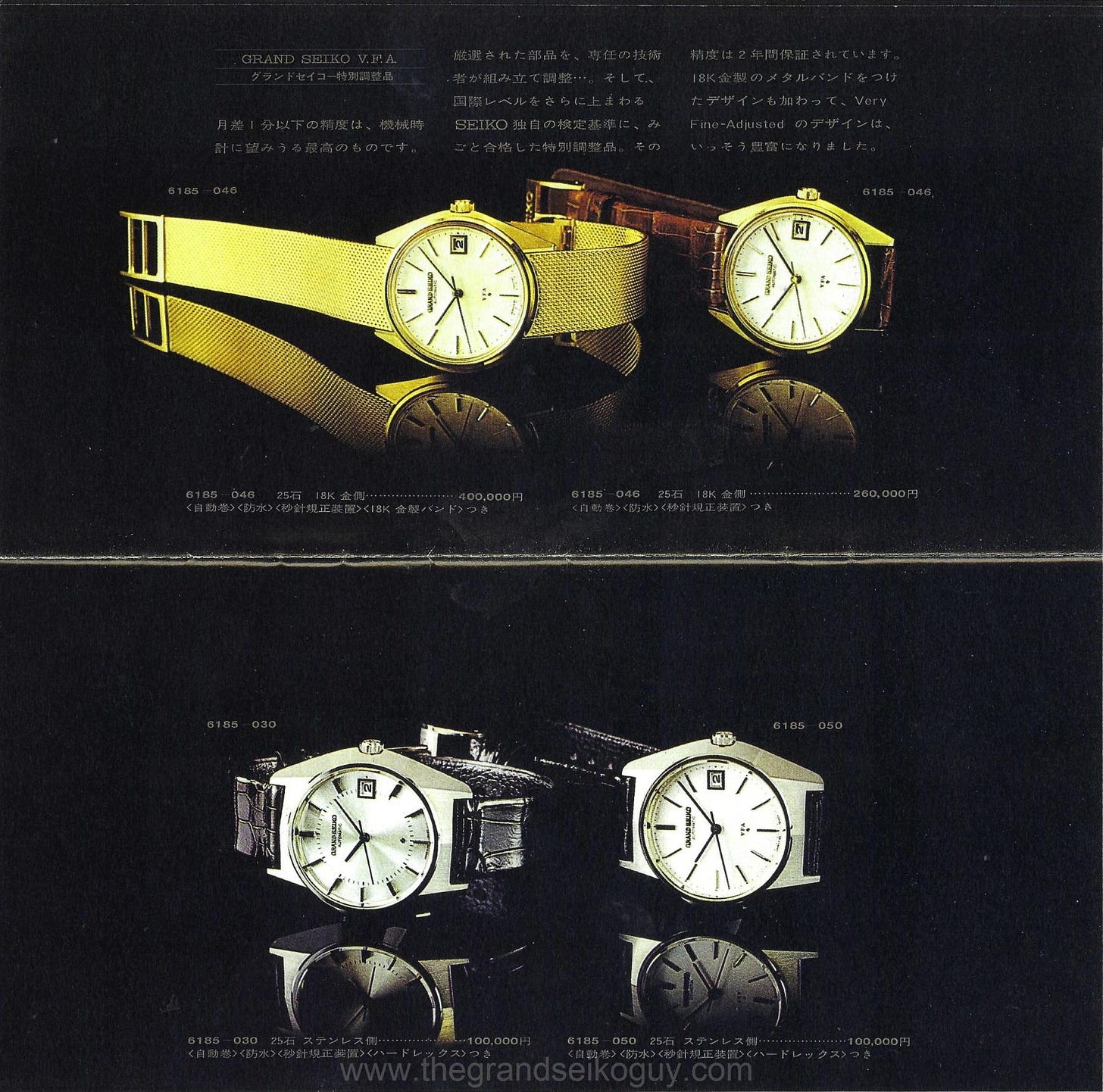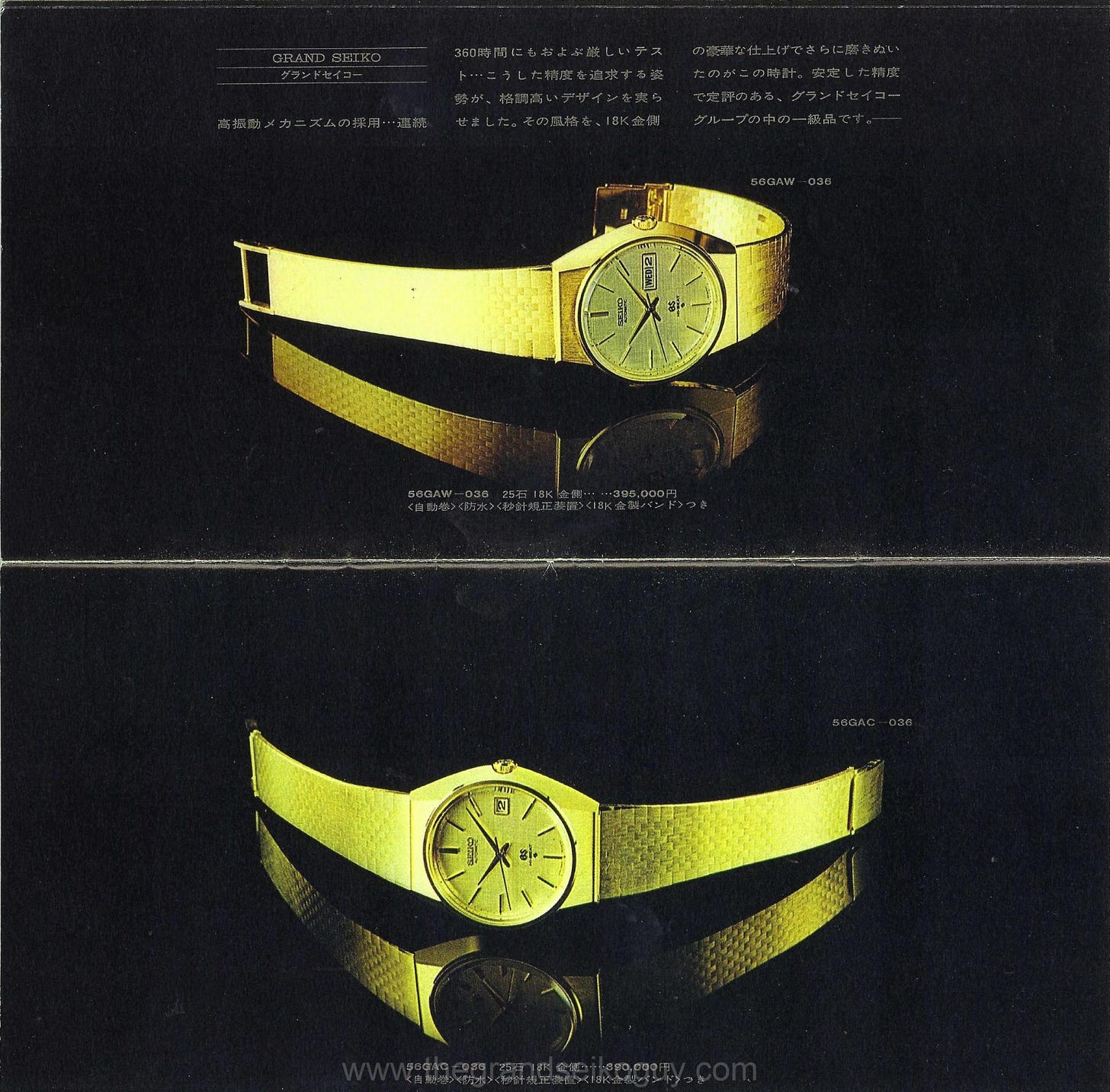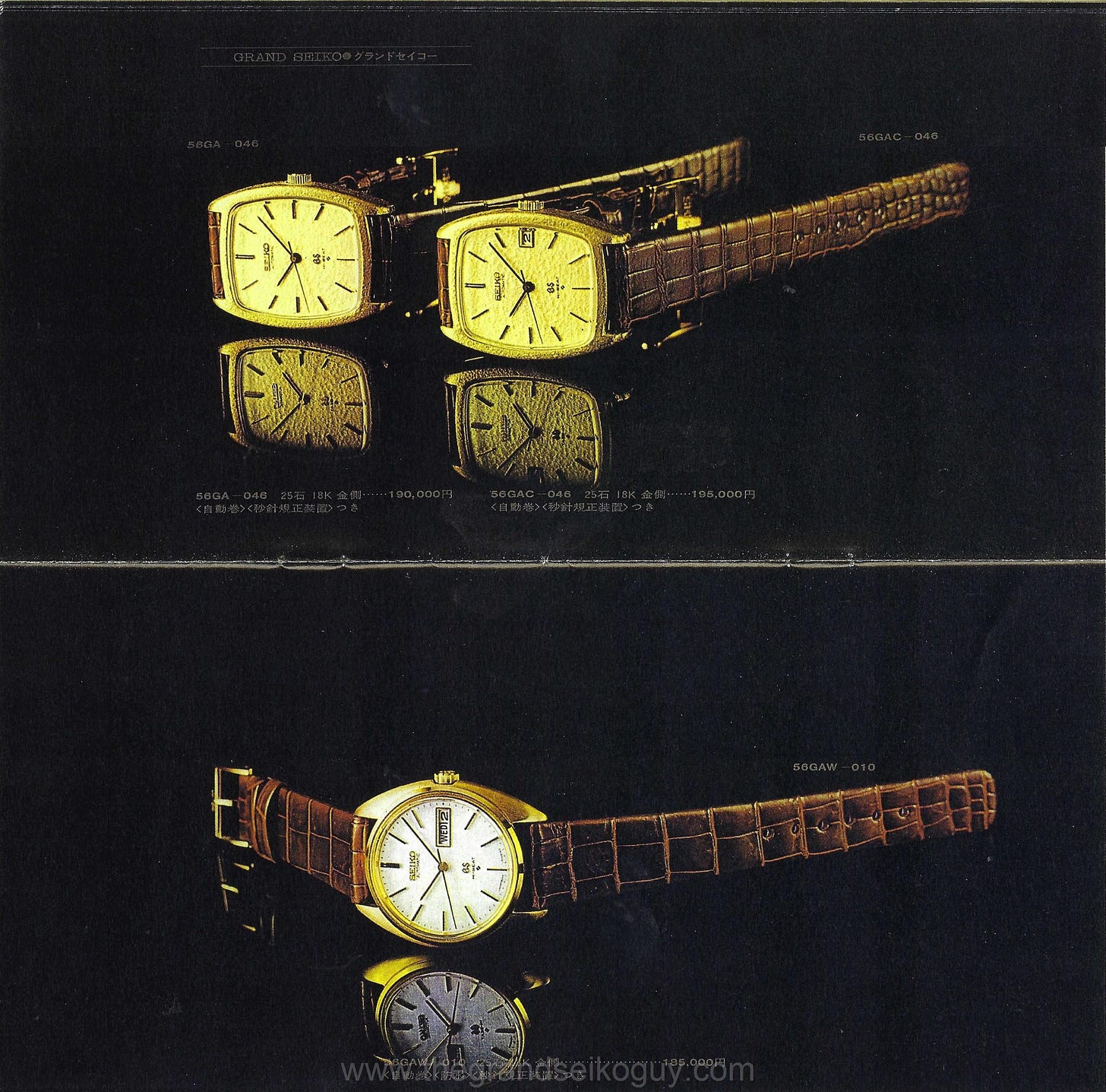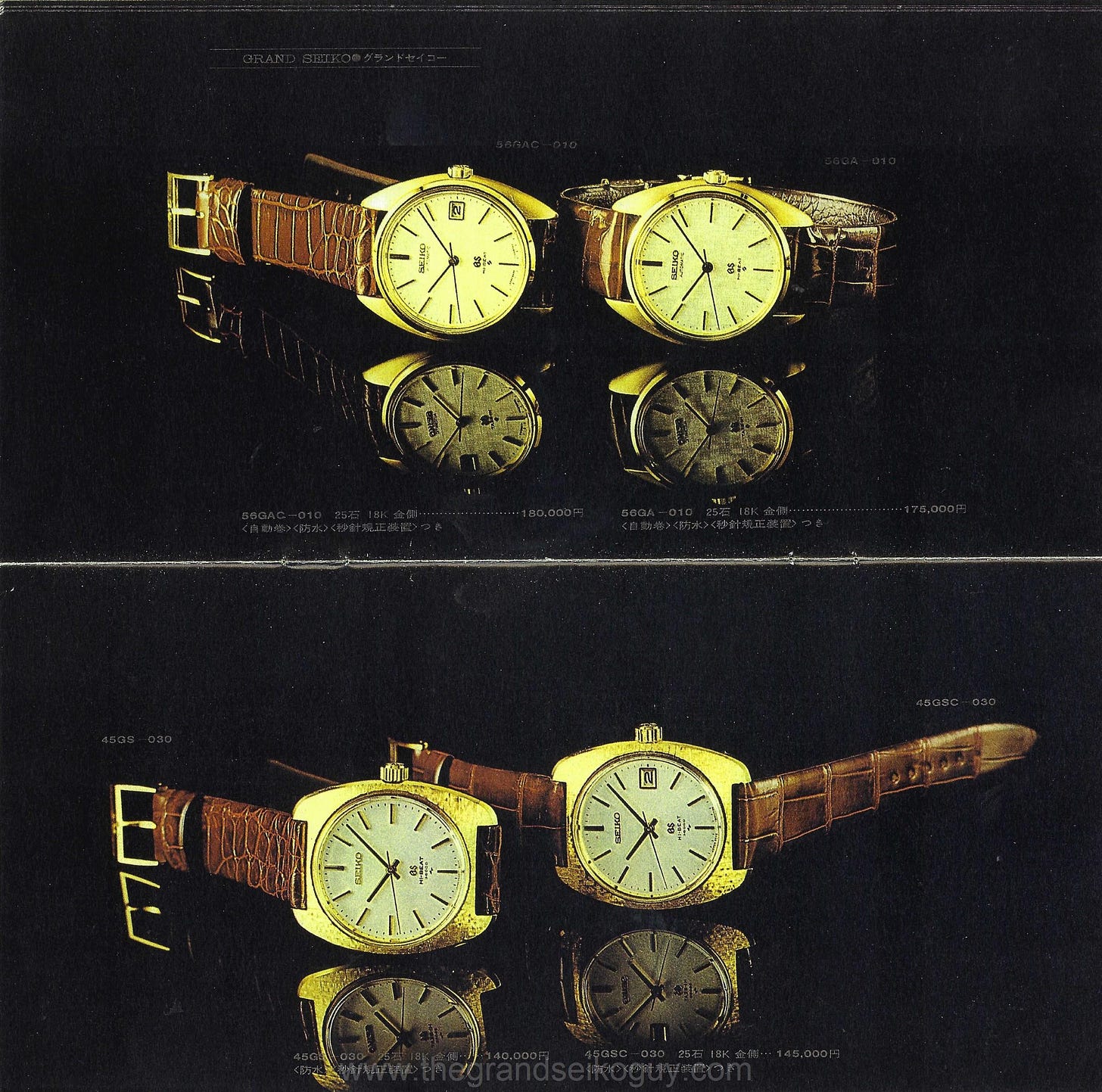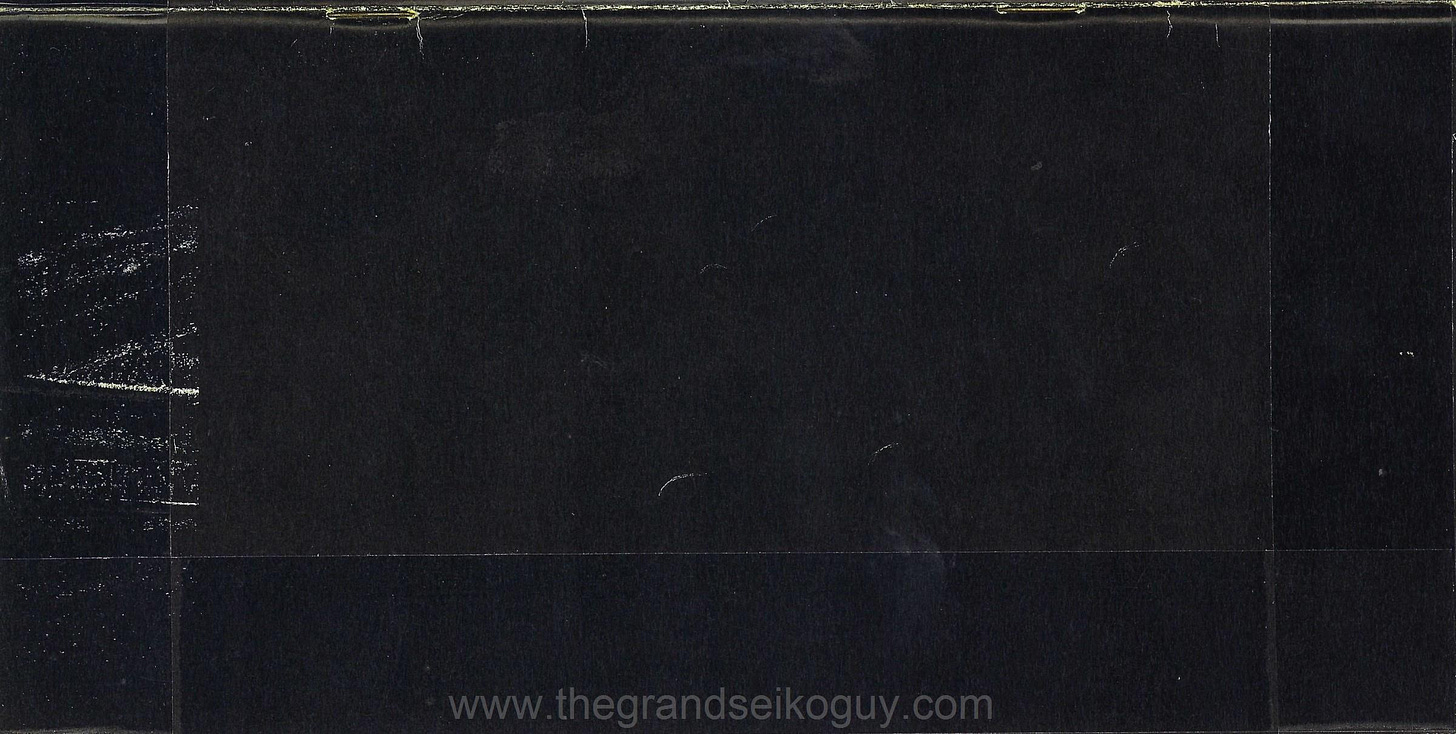Preamble
For the benefit of those subscribers who have signed up recently, each Tuesday I publish an article featuring scans of vintage Grand Seikos that appeared in the Seiko catalogues of the 1960’s and 1970’s.
Although based on the articles originally published on TGSG website, these articles will be updated where appropriate with additional knowledge gained in the three or so years since they were first made available.
Additionally, since I now have the complete set of the catalogues, I am able to publish these articles in the correct chronological order - something that wasn’t possible when posting to the main website since, when starting out documenting the catalogues, I hadn’t completed my collection of them.
You can view the previously published newsletters in this series here.
Acknowledgements
I am extremely grateful to the Seiko Museum in Tokyo for providing a copy of the 1971 Seiko Special Luxury Catalogue that was used to produce the scans in this newsletter.
The Seiko 1971 Special Luxury Catalogue
The final catalogue of 1971 was the third annual “Special Luxury Catalogue” that featured the very top of the range Seikos - there was no supplement to the number 2 catalogue this year.
On its pages we find no fewer than four “Very Fine Adjusted” references, seven watches from the 56GS series, and two from the 45GS series. All but two of the Grand Seiko references featured in this catalogue have 18K gold cases.
The VFA’s
I mentioned in my newsletter on the Seiko 1971 volume 2 catalogue that it was the last of the Seiko catalogues to feature Grand Seikos before any other reference. In this Special Luxury Catalogue, there are several quartz models featured (both in precious metal and stainless steel cases) that are pictured prior to the VFA’s – a sure sign of just how much disruption quartz was going to be causing over the coming couple of years.
Three of the watches pictured here appeared in the 1970 Special Luxury Catalogue, with two of them – the two steel cased references – also making an appearance in the 1971 volume 2 catalogue.
The new reference, prominently featured in the top left of the double-page spread shown above, is the same 18K gold cased 6185-7000 (catalogue code 6185-046) that first appeared in the 1970 Special Luxury Catalogue, but this time it is also shown on an 18K gold bracelet. The 6185-7000 only appears in these two Special Luxury Catalogues. It had a very short retail lifespan – no doubt impacted severely by just how hard Seiko were pushing their luxury quartz watches at the time – and is extremely rare to come across today.
Apart from a small black and white image of the watch that appears in an in-house Seiko publication (pictured below), I am not aware of a single other photograph that exists of the 6185-7000 on its 18K gold bracelet other than the one in this catalogue, and have never seen one offered for sale.
Pricing wise, the premium for the bracelet on the VFA in 1971 was a mere 140,000 Yen, with the reference with the 18K bracelet priced at 400,000 Yen. When, just two years later, what would appear to be the same bracelet design was used on the 5646-7005, the price differential between the leather strap and 18K gold bracelet variants of that watch was 319,000 Yen - an indication of what was happening to the price of gold in the early 1970’s.
One intriguing question that remains regarding the 6185-7000 on the 18K bracelet is what the clasp looks like. Every other VFA either came with simple “Seiko” (not “GS”) branded buckles, , or - in the case of the 6185-8000 - “Seiko” branding on the clasp.
The 5646-7005 mentioned had GS branding on the clasp - whether or not the VFA shared this branding is a mystery that hopefully will be solved one day, should an example ever surface.
5645-8000, 5646-8000 in 18K gold
Apart from the 6185-7000 VFA and the 5646-7005 discussed above, only three other vintage Grand Seikos were ever produced with 18K gold bracelets, and two of them are featured on the next double page spread in the catalogue.
The 5645-8000 (catalogue code 56GAC 036) and 5646-8000 (catalogue code 56GAW 036) both feature a case shape that was to be used on other references in stainless steel (to be introduced in the 1972 regular catalogue), but makes its debut here in 18K gold.
As is so often the case, the images in the catalogue don’t really do the watches justice - what is not apparent from the scan above is the wonderful linen texture to be found on these dials, as evidenced in the studio shot below -
5641-5000, 5645-5000
Also making their debut in this catalogue are two more 18K cased watches from the 56GS range – the time only 5641-5000 (catalogue code 56GA 046) and time and date 5645-5000 (catalogue code 56GAC 046).
These two watches would remain in the range for a couple of years. Their relatively small case size – just 32mm wide (excluding the crown) and 40mm tall – means that they are not particularly desirable with collectors today, but they do make for extremely elegant dress watches, featuring hammer-toned cases and snowflake textured dials.
In recent years, Grand Seiko have pointed to the 5641-5000 dial as being the inspiration for the iconic SBGA011 and SBGA211 “Snowflake” references, although it should be pointed out that at the time of the introduction of the SBGA011 this inspiration was never mentioned (and, indeed, the watch was not referred to as the “Snowflake”, but rather the “Snow White”).
The remaining five Grand Seiko watches featured in this publication all appear in the 1971 volume 2 catalogue that discussed in the previous newsletter in this series. For the sake of presentation, I will re-group how they are presented in the catalogue – see the gallery at the end of this article for the original page layout.
5641-7005, 5645-7005, 5646-7005
As mentioned, these three watches all featured in the second volume of the regular 1971 catalogue. It is a little odd how they are pictured here, as the dial on the day-date 5646-7005 (catalogue code 56GAW 010) clearly appears to be a completely different colour to those on the time and date 5645-7005 (catalogue code 56GAC 010) and the time only 5641-7005 (catalogue code 56GA 010).
Here’s how the same three watches appear in that earlier catalogue –
The reason for the apparent difference in the dial colour is simply down to the photography in the Special Luxury Catalogue. Note that the colour of the cases of the bottom two watches is significantly yellower than that of the 5646.
Additionally, the “010” suffix in the dial codes of all three watches indicates that the dial colour is white. These days, many of the dials seen on these watches have patinated somewhat, as seen in the studio shot below. On rare occasions one can actually find examples that are almost as yellow we see in the SLC.
4520-8010, 4522-8010
The final two Grand Seiko references in this catalogue are also those that have been in the range for the longest period of time of all the watches featured.
The 4520-8010 (catalogue code 45GS 030) and 4522-8010 (catalogue code 45GSC 030) first appeared in the supplement to the 1969 volume 2 catalogue, and would continue to appear in every catalogue, including the Special Luxury Catalogues, right up until 1973’s volume 1.
Which seems like as good an excuse as any to share a studio shot of the 4520-8010 -
Gallery
Presented below are scans of the front cover, inside front cover, pages featuring Grand Seiko references, and the back cover, of the 1971 Seiko Special Luxury Catalogue.




